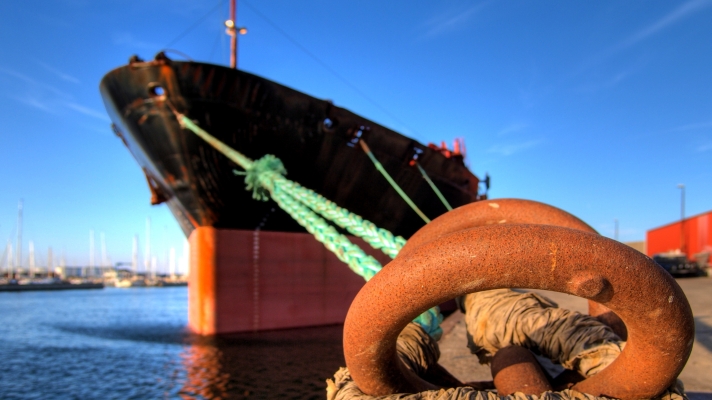Water level variations can affect how certain port structures interact with vessels. In a recent Mars Report, a vessel’s fender was forced under the fender post due to low water levels. It caused the vessel to come into contact with the fender post resulting in damage to the ship.
The incident concerned the 103-metre livestock carrier Angus Express, which arrived at the Broome, Western Australia, pilot boarding ground on 20 April 2018. The incident was investigated by the Australian Transport Safety Bureau, which published a report in March 2019. The report was subsequently discussed in the Nautical Institute’s Mars Reports.
A transcript of what happened:
A livestock carrier was inbound to load cattle. The bridge team consisted of a pilot, the master, chief mate and a seaman at the helm. The master-pilot exchange discussed the berthing plan, with particular attention to the fact that the vessel’s bow thruster was inoperable and only one harbour tug was available.
Although the port handbook recommended that ships the length of the livestock carrier (and those with no bowthruster) utilise two tugs for manoeuvres, the pilot explained that he had already discussed the issue with the harbour master. They had concluded that berthing with a single tug was possible in light winds if completed within an hour of slack water.
The pilot explained the plan to the ship’s chief mate and master, and they agreed with the manoeuvre. The ship came alongside the wharf, with two Yokohama fenders positioned forward and aft between the ship and wharf’s vertical fender posts. It was now low water (1.55 metres).
The ship was about eight metres aft of its berthing position when mooring lines were run to the wharf. The pilot then tried to use the mooring winches and lines to move the ship forward into position. He also instructed the tug, in position about amidships, to push forwards at a 45-degree angle using minimum power to assist in the repositioning.
The weight of the ship forced the forward Yokohama fender under the fender posts, which resulted in the ship’s bow moving towards the wharf. Shortly after, an overhanging scupper protrusion made contact with the fender post.

The pilot thought that the ship had pivoted on the Yokohama fender and instructed the tug to stop pushing. The ship moved slightly off the fender posts and the fender cleared the post. About two minutes later, the pilot instructed the tug to push minimum forward again, resulting in the forward Yokohama fender once again passing underneath the fender posts. The ship’s bow again moved towards the wharf, and the scupper protrusion again made contact with the fender post.
The pilot instructed the tug to stop, and the ship came away from the vertical fender posts. The pilot then advised the master to use the ship’s engines to reposition the ship, which was done without incident.
Investigation Findings
Post-incident investigations by the Port Authority and the pilotage provider confirmed that the fender posts at this berth were shorter than at others. There was no evidence that these shorter posts or the potential for fenders to be forced under them at low water levels had been documented or shared with pilots through training or instruction.
The official investigation found that:
- The height of tide when the vessel was berthing was low enough to expose the base of the wharf’s fender posts. When the forward Yokohama fender came under pressure, it was forced under the post, which allowed contact with the post and damage to the ship.
- The harbour master and pilot were unaware of any height of tide limitations associated with berthing ships alongside Yokohama fenders at this berth. Therefore, the risk assessment did not include any mitigating factors for berthing alongside at low water levels.
Actions Taken
The Kimberley Ports Authority has implemented guidelines for berthing and being alongside when using Yokohama style fenders for times of limiting low water levels. Also, the risk evaluation process between harbour master and pilot has been extended to include focussed quick risk assessment for circumstances such as tug shortages, vessel manoeuvring issues and tidal levels. A memorandum has been issued to all pilots and port users advising of these changes.
Mars Reports
This accident was covered in the Mars Reports, originally published as Mars 201962, that are part of Report Number 324. A selection of this Report has also been published in SWZ|Maritime’s November issue. The Mars Reports are also published on SWZ|Maritime’s website to help prevent maritime accidents.
More reports are needed to keep the scheme interesting and informative. All reports are read only by the Mars coordinator and are treated in the strictest confidence. To submit a report, please use the Mars report form.








